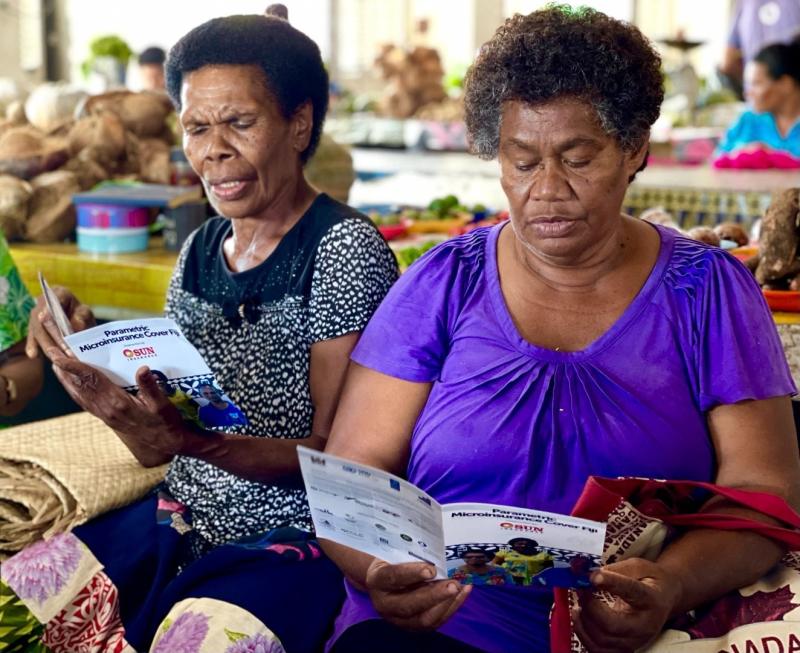

In 2022, Tropical Disturbance TD03F that intensified into a tropical depression caused sustained winds and heavy rainfall. The tropical depression led to heavy rainfall in Fiji's western, central, and eastern divisions.
The estimated losses due to the event stood at FJD 100 million (USD 50 million). Smallholder farmers, fishers, and market vendors were among the most acutely impacted, given the vulnerable nature of their livelihoods and the lack of capacity to bear the financial impacts of weather-induced disasters.
In 2021, Fiji marked a milestone with the introduction of its first-ever parametric-based insurance. This initiative, led by local insurers, agriculture and farmer agencies, as well as mobile network operators, received support from the Pacific Insurance and Climate Adaptation Programme (PICAP) [1]. This multi-dimensional partnership helped accelerate claim payments through mobile money platforms during the tropical disturbance. However, the parametric insurance was designed to provide coverage for losses associated with rainfall and wind damage from cyclones. As a result, losses incurred due to tropical depressions (not classified as a cyclone) were excluded from the coverage. After one year of designing, testing, and finetuning the product, the Programme reflected on the future direction to take and realized the need to restructure the products to meet the needs of target population segments.
Parametric insurance offers fast claims payouts through pre-agreed triggers or parameters and without the need for on-site verification of losses. This reduces administrative costs and improves the transparency of insurance products, leading to an efficient sign-up, trigger, and payment process. Despite its advantages, parametric insurance suffers from an inherent flaw -- which is a mismatch between actual losses and predicted losses, known as basis risks. Basis risks not only affect the pricing of insurance products but also lowers the significance as consumers feel their needs were not adequately met the last time they qualified for a payment.
Basis risk arises from two distinct sources – zonal (idiosyncratic) risk, and design risk. The zonal (idiosyncratic) risks inherent to diverse groups – imply that the loss due to a particular event may impact one beneficiary more than another. Further, the risk is confined to either region or occupation. Due to its unsystematic nature, idiosyncratic risks are expensive to manage, and tackling them would impact the overall cost of insurance. To make insurance cost-effective, idiosyncratic risks are generally ignored, without impacting the overall cost of insurance. This is applicable, especially for a mass product designed for low and medium-income segments.
The design risk is caused due to the lack of deriving an optimal index that does not incorporate the covariant risk. The basis risk is minimized through robust product design backed by testing of contract parameters.
Designing index insurance involves ascertaining the essential parameters to target the key shocks that affect the financial resilience of the user. The quantitative model for designing parametric insurance requires actuaries to define additional parameters (trigger value, exit value, etc.) in order to set up the formula for a claim event and claim size, which are allowed to be based on single or on various weather indexes.
However, meeting the requirements of remote and diverse communities through index insurance products is an enormous challenge. Focusing on social equity helps to consider how social differences and associated inequalities may affect differently-capacitated people in the same disaster event. This requires the designers and implementers of index insurance to recognize a social (if not moral) responsibility to acknowledge the heterogeneity of communities, and actively consider the ground situation faced by the targeted beneficiaries.
To read the full article please head over to its original place of publishing uncdf.org